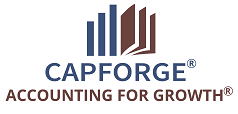How to Prepare for a Financial Audit
Preparing for a financial audit can be a nerve-wracking experience for small business owners. After all, they represent a deep dive into your company’s financial health. However, a well-prepared audit shouldn’t be feared, but rather viewed as an opportunity to demonstrate the strength and transparency of your organization.
Proper preparation is crucial to streamlining the audit process, saving you time and money in the long run. This comprehensive guide will equip you with the knowledge and actionable steps you need to confidently approach your next financial audit.
We’ll break down the process into clear, easy-to-follow steps, so read on to learn more!
Understanding financial audits
Financial audits are independent examinations of a company’s financial records. Their primary purpose is to assess the fairness and accuracy of the financial statements – the income statement, balance sheet, and cash flow statement. Audits ensure these statements reflect a company’s true financial position and performance. There are two main types of financial audits: internal and external.
- Internal audits are conducted by a company’s own employees and focus on evaluating the effectiveness of internal controls and identifying areas for improvement. They can uncover inefficiencies, potential fraud, or weaknesses in financial reporting.
- External audits are performed by independent accounting firms. They provide an objective assessment of the company’s financial health and adherence to accounting standards. External audits culminate in an auditor’s opinion, which is a formal statement on the overall fairness of the financial statements.
Financial audits offer significant benefits to businesses. This process verifies the accuracy of financial statements, thus increasing trust and transparency for the company’s stakeholders. Audits also assess the strength of internal controls, helping businesses identify and address potential weaknesses that could lead to errors or fraud.
Ultimately, a successful financial audit can enhance a company’s reputation, attract investment, and contribute to long-term financial stability.
Key documents for audit preparation
Before an audit, the auditor sets a start date and tells the company what documents they need. Having these documents ready beforehand can speed up the process:
- General Ledger and Trial Balance: Imagine these as the company’s financial scorecard. The general ledger tracks every financial transaction throughout the accounting period, categorized by account (like revenue, expenses, assets, and liabilities). The trial balance summarizes these accounts, ensuring their debits and credits balance.
- Supporting Documentation for Transactions (Invoices, Receipts, Contracts): Think of these as receipts for the company’s checkbook. Invoices, receipts, and contracts provide the evidence that backs up the entries in the general ledger. During the audit, auditors will meticulously examine these documents to verify the accuracy and legitimacy of the underlying transactions.
- Inventory Records and Valuation Methods: These documents shed light on the company’s stockpile of goods and how their value is determined. Inventory records detail the quantity and type of items the company has on hand, while valuation methods explain how their worth is calculated (e.g., cost, selling price).
- Fixed Asset Schedules and Depreciation Calculations: These documents provide a detailed inventory of the company’s long-term assets, such as property, plant, and equipment (PP&E). They also explain how the cost of these assets is spread out over their useful life through depreciation. Auditors meticulously examine these schedules and calculations to verify that depreciation is calculated correctly and that the company’s fixed assets are appropriately accounted for.
- Payroll Records and Tax Filings: Payroll and tax documents offer a window into how the company pays its employees and fulfills its tax obligations. Payroll records detail employee wages, deductions, and withholdings, while tax filings demonstrate the company’s reported income and taxes paid. Auditors will assess these documents to ensure compliance with tax regulations and proper payroll processing.
- Internal Control Documentation and Policies: These files serve as the blueprint for the company’s internal control system, outlining the procedures it has in place to safeguard assets, maintain data integrity, and promote accurate financial reporting. Auditors will evaluate these controls to identify any weaknesses that could leave the company vulnerable to errors, fraud, or theft.
Outlining the audit process
To fully prepare your team for a financial audit, it’s important to outline how the entire process will go. Here’s a breakdown of the typical stages involved, along with key tips to ensure a smooth audit experience:
- Opening Meeting: This initial meeting establishes the foundation for a successful audit. The auditor will discuss the scope of the review, which outlines the specific areas they will examine. This could include financial statements, internal controls, or compliance with specific regulations.
Timelines and communication channels will also be established during this meeting. Be prepared to discuss your business operations, recent financial performance, and any potential areas of risk. - Walkthrough Procedures: The auditor will gain an in-depth understanding of your internal control environment. This involves reviewing your accounting software and processes for handling cash, recording transactions, and safeguarding financial assets.
The walkthrough helps the auditor assess the effectiveness of your controls in preventing errors or fraud. Having well-documented procedures and clear segregation of duties can significantly improve audit efficiency. - Testing Transactions: To verify the accuracy of your financial statements, the auditor will select samples of transactions across different accounts. This might include sales receipts, purchase invoices, or payroll records.
Be prepared to provide supporting documentation for these transactions, such as contracts, bank statements, or vendor invoices. The auditor will use these samples to assess whether your transactions are properly recorded, classified, and valued according to accounting standards. - Closing Conference: The final stage involves the auditor presenting their findings and recommendations. This is your opportunity to understand any adjustments needed to your financial statements and discuss the rationale behind them. Don’t hesitate to ask clarifying questions to ensure a complete understanding of the audit report.
Importance of Open Communication:
Open communication is paramount throughout the audit process. Here’s why it’s crucial:
- Prompt Response: Delays in responding to auditor inquiries can significantly slow down the audit timeline. Designate a point person within your organization who can promptly address the auditor’s requests and ensure all necessary information is readily available.
- Clear and Transparent Communication: If there are discrepancies in your records, be prepared to provide clear explanations for them. The auditor is looking to understand the underlying reasons behind any variances. Transparency builds trust and demonstrates a commitment to accurate financial reporting.
- Proactive Approach: Don’t wait for the auditor to come to you with questions. If you have any concerns or require clarification on anything related to the audit process, be proactive in reaching out to the auditor. This demonstrates a collaborative spirit and helps ensure a smooth and efficient audit.
Post-audit action plan
The specific actions a small business takes after a financial audit depends on the outcome of the audit itself. Here’s a breakdown of the following steps for clean audits and audits with discrepancies:
Clean Audit:
- Review and Analyze the Report: Don’t just skim the auditor’s report. Take time to thoroughly understand their findings. This includes dissecting areas of strength in your financial processes, like strong internal controls or efficient bookkeeping practices. It’s also important to identify any recommendations for improvement. These might be suggestions to streamline specific tasks or implement new software to enhance data security.
- Implement Improvements: The auditor’s recommendations are valuable insights to strengthen your financial management. If the audit identified areas for improvement in accounting practices or internal controls, address them promptly. This could involve investing in user-friendly bookkeeping software or strengthening internal approval processes to minimize errors and ensure proper oversight.
Unclean Audit:
- Address Discrepancies and Errors: If the audit finds errors or inconsistencies in the financial statements, work with the auditor to understand the root cause and make corrections. This may involve reconciling accounts or adjusting entries to ensure your financial statements accurately reflect the business’s health. This process might also uncover areas where your record-keeping fell short.
- Develop a Plan to Prevent Future Issues: Depending on the severity of the discrepancies, you may need to develop a plan to prevent similar problems in the future. This could involve additional staff training on proper bookkeeping procedures or implementing new internal controls, such as a dual-approval system for significant expenditures.
General Best Practices for All Businesses:
- Follow Up with the Auditor: Don’t hesitate to follow up with the auditor for clarification if you have any questions about the audit report or recommendations. Open communication is key to ensuring a full understanding of the audit’s findings and how to best implement improvements.
- Maintain Good Accounting Records: Regardless of the outcome of the audit, it’s crucial to maintain good accounting records going forward. This will make future audits smoother, as the auditor can easily access well-organized financial information. More importantly, having accurate and up-to-date financial records allows you to make informed business decisions based on a clear picture of your company’s financial health.
- Consider Long-Term Implications: A clean audit can be a valuable tool for building
trust with stakeholders like investors or lenders. On the other hand, if your business receives a going concern opinion (meaning the auditor doubts the company’s ability to continue operating), it may be necessary to develop a turnaround plan to address underlying financial issues.
Conclusion
While a financial audit may seem daunting for small businesses, it can be a valuable opportunity to strengthen your financial practices and build confidence with stakeholders. By following the steps outlined above – from organizing your records to understanding your financial statements – you can approach your audit with a sense of preparedness.
Remember, a smooth audit hinges on open communication with your auditor and a commitment to continuous improvement in your financial management.
Need help sorting out your company’s financial records? If so, our team is here to help. Feel free to fill out the form below, and we’ll get in touch with you shortly.








